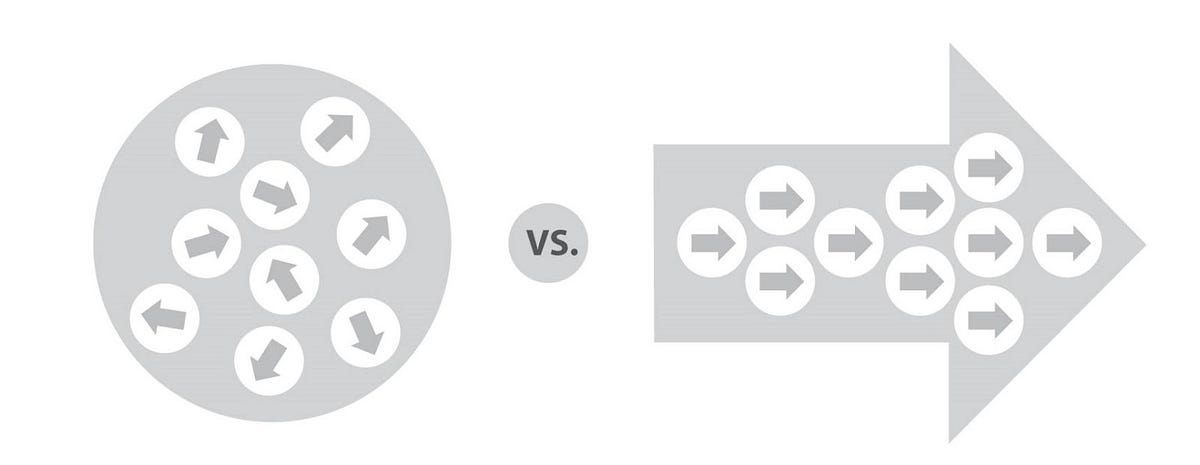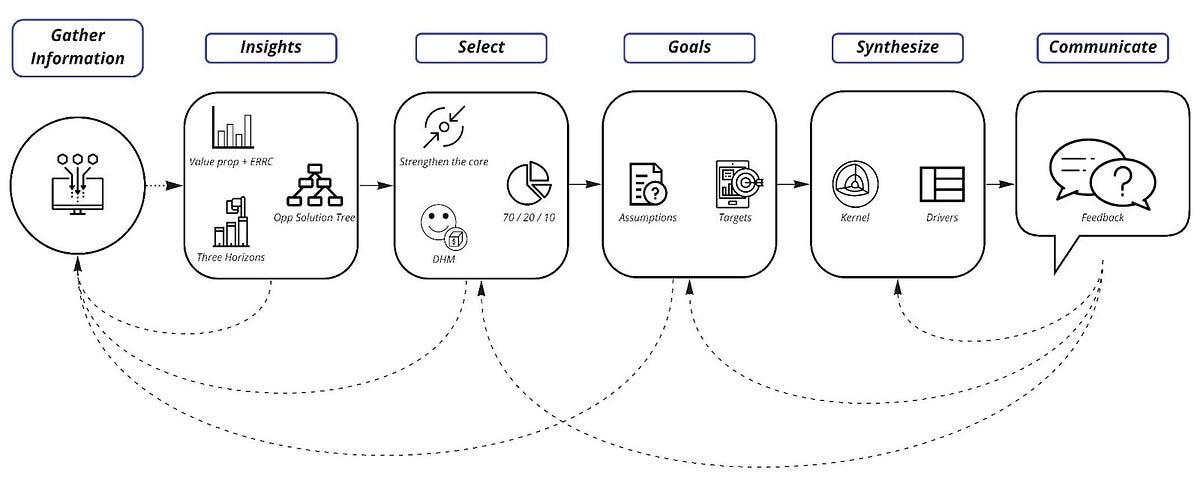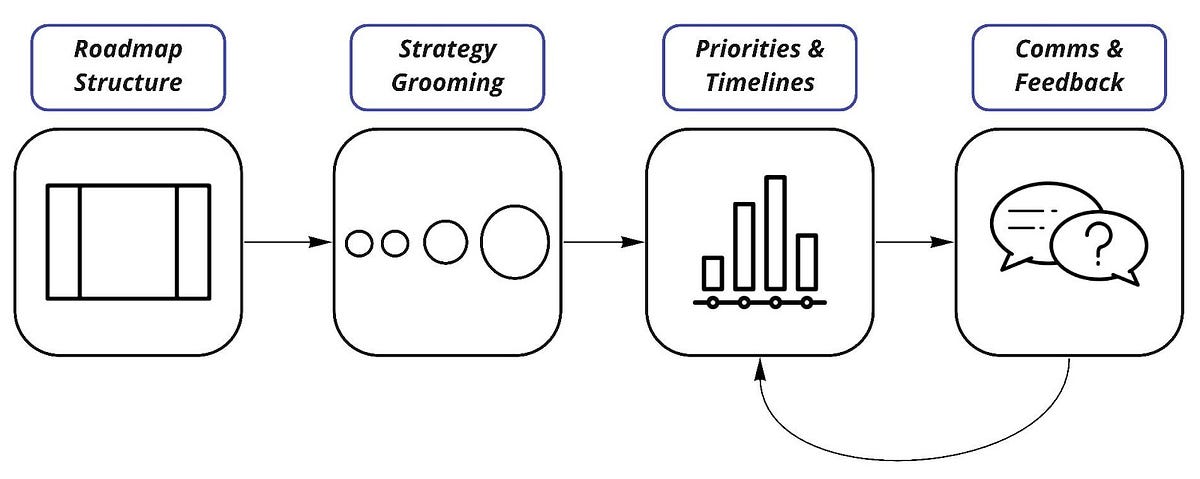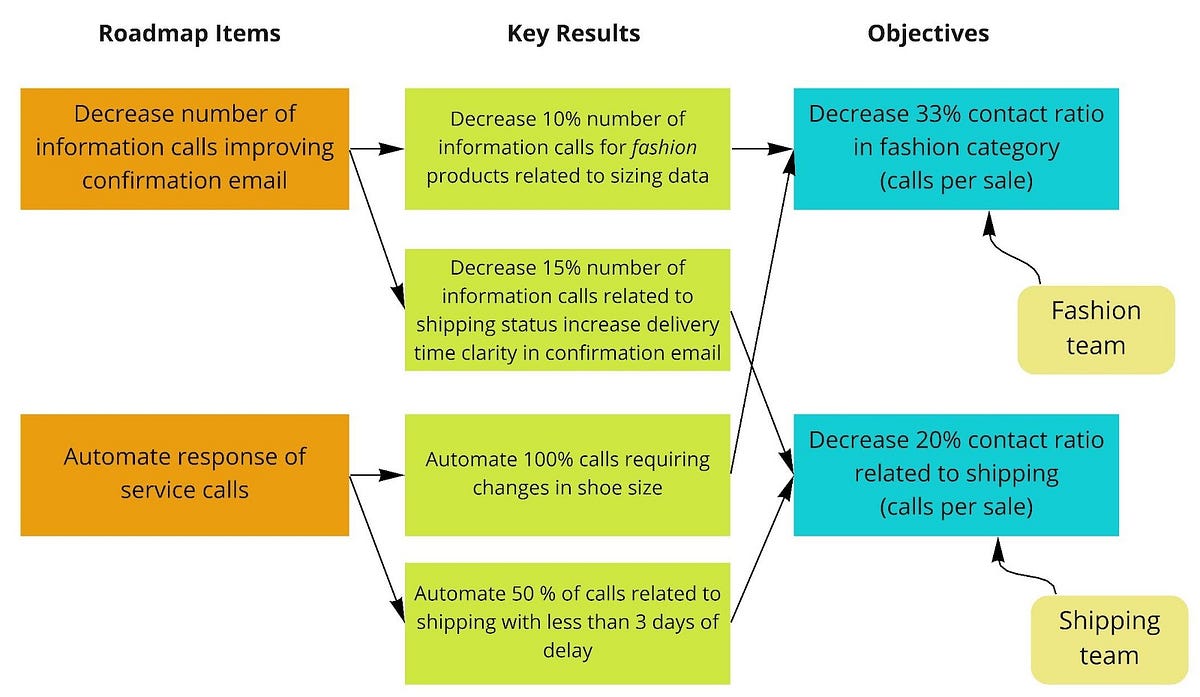Yesterday Product Direction was FINALLY released, and it became #1 new release in its category! I wanted to create a brief summary for those interested in these topics.
1 — The problem
As product leaders, one of our key responsibilities to create successful products is to select the right problems to solve, those that will make a big difference, and break them down into actionable opportunities and measurable objectives.
However, that is a very challenging task, that most companies don’t have yet solved. Among the hardest obstacles is the lack of method and accountability: how to do it, who has to do it, and how does it look when done correctly? Additionally, teams usually postpone this longer-term strategic work in favor of tactical and urgent work.

Most available materials on strategy are rather theoretical and superficial. Product Direction has a practical approach, describing the processes, tools, artifacts, and real-life examples you can use to solve this puzzle.
Once implemented, the benefits are enormous. The organization gains focus and alignment, that fosters team’s empowerment and independence, and finally maximizes the outcomes of our product development and innovation initiatives.

A word of caution before we jump to details: as explained in the book, these tools and frameworks do not pretend to be dogmatic or linear. Everything is connected and the success of most process and techniques depend on the context. The intention is to provide a guideline and explain why certain phases are important, so you can adapt it to your situations.
2 — Product Strategy

Armed with your desired vision, your first step toward setting the Product Direction is to create the right product strategy, building the bridge between the vision and your expected outcomes.
To do so, you must rely on different inputs and diagnosis elements that will help you come up and select the right strategic insights.

Based on your diagnosis, you explore multiple insights: learning with a high potential to impact our users’ needs and business results. This does not need to be a super-smart reasoning of your diagnosis reserved to the enlightened: relying on different tools such as the opportunity-solution tree, the core value differentiation, Bussiness Model Canvas, or McKinsey’s Horizons of Grow, you can evaluate your situation from different perspectives and come up with promising opportunities and problems to solve.
Armed with your insights, you proceed to select, which is all about focus and positioning. You want to align the entire organization towards the differentiation we wish to have on our customers’ value proposition, which will strengthen our strategic advantages. Once more, we can rely on tools like “strengthen the core” or Google’s 70/20/10 to decide the best alternatives.
Finally, you need to associate our selected paths with the outcomes you expect to achieve by investing in them. You have to define a set of goals and assumptions to measure and validate as you progress with your execution. In the strategic context, you will have much more uncertainty, and not all opportunities can be measured with the same tools (for example, a long-term bet would be very different to measure than an expansion of your core business). Tools like risk analysis, north star, and validating learning can help you make these definitions.
To complete your strategy, you need to not only “document it” but also synthesize it into a single-page diagram, that can be shared in a memorable way across the organization. Tools like the drivers or kernel model help you build the communication artifact, along with tools to collect feedback and accelerate learnings about your selected paths.
3 — Strategic Roadmaps
Roadmaps are very controversial tools and have been at the root of many failed executions and feature-factory teams. Time scale, solutions vs results, modifiable vs committed, are among the most controversial problems teams face when using this tool.
However, the next step to bring your strategy down to execution is to do an in-depth breakdown of the strategic drivers, considering sequencing and intermediate problems and opportunities that create our path to success. And that is exactly what a well-crafted strategic roadmap can help us achieve, as you will see in the second section of the book.

The roadmap structure helps align how elements are organized to foster clarity and visibility for your product direction.
Strategic grooming helps you divide your selected drivers into actionable problems and opportunities, using tools like customer journey maps, trees, and slicing, resulting in “right-sized” items for your roadmap (granularity depending on how close or far in time the opportunity is).
Afterwards, you need to prioritize. Sounds like a product manager’s bread and butter. But actually strategic prioritization is different, and using “traditional” approaches at this level can be dangerous. Using the sequence that best improves your strategic advantages is a far better approach, combined with an understanding of your desired outcomes per time horizon.
4 — OKRs
OKRs are a perfect match to complete the product direction trio due to their simplicity, fast pace, and ambitious targets. The strategic goals and the roadmap items are the perfect input to set up aligned objectives that help you achieve your strategy’s desired outcomes.

While the book covers the basics of OKRs, the most interesting aspects may lie in different tools to successfully translate from roadmap items to great quality OKRs. Covering concepts like roadmap items connection, KPI trees, and leading indicators you can craft goals that empower teams and multiply their impact on the strategic path.

Finally the book covers how dependency management with product direction is different than with traditional top-down management. Having teams that share the same strategic context gives them further empowerment and tools to decide by themselves what is in the best interest of the strategy and the company, instead of optimizing local maximums. Likewise, improving OKR quality can be a peers effort, and the book helps uncover what quality considerations teams can establish to help each other raise the bar.
5 — All together
Product Direction is part of the larger cycle of product management and development.
Whithin this cycle, the role of Product Direction is to select the problems and goals on which we want to focus, to assure an aligned discovery and delivery processes.

As said, none of this is linear and all processes are interconnected. But hopefully you can see why each phase is important and how each one help the others.
Available on Amazon
It would be impossible to write an article that can cover the 60.000 words of content in the book, but I hope it gives a glimpse of the problems covered in it. If you are struggling with any of those, I invite you to read it!
